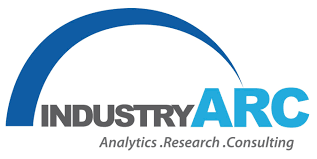Fertilizer Additives Market size is forecast to reach US$ 1.7 billion by 2026, after growing at a CAGR of 3.5% during 2021-2026. Fertilizer additives are chemicals that are used to prevent the loss of important macro and micronutrients such as nitrogen, phosphorus, potassium, calcium, manganese, and iron from fertilizers. Loss of these nutrients can have consequences like deterioration of the excellence of the fertilizers, ultimately have an effect on their productivity. It can be used as Anti-Dust Agents, Anti-Caking Agents, Hydrophobic agents, Corrosion Inhibitors which are also available for each type of production processes, such as blending, prilling, granulation, and crystallization, and for fertilizers like Diammonium phosphate, Ammonium sulfate, Calcium Nitrate, Urea, Triple superphosphate, and others. Further, it is also used in hydroponic nutrients to improve plants’ immunity on a few fronts. The Asia Pacific is expected to witness the highest demand for fertilizer additives over the forecast period with countries such as India, China, and Bangladesh at the forefront. The demand for fertilizer additives is mainly dependent on the growth of the fertilizer industry. Further, the shrinking arable land, adoption of new technology in fertilizer production, and the increasing willingness of farmers to spend more for increased productivity are some important factors that contribute to the growing demand for fertilizer additives.
COVID-19 Impact
Covid-19 brought the world economy to its knees, with the fertilizer additives market not being an exception. During the covid19 pandemic, the agriculture sector went through plight as the lockdown coincided with the period when farm activity was at its peak. This resulted in the limitation of transport facilities, laborers, and the absence of machine fixes mechanics. The impact on the agriculture sector directly affects the growth of the fertilizer additives market. Although the sector was poised for quick recovery and witnessed growth in production and as well as exports.
Fertilizer Additives Market Segment Analysis – By Product Type
Anti-Caking Agents held the largest share of 30% in the Fertilizer Additives Market in 2020. Most fertilizers drift to agglomerates during storage and when fertilizer is not free-flowing, there will be irregular delivery during field application. These situations can weaken and at times even damage the value of fertilizer, and in some cases, generate safety threats for workers in the industry. Enhancing anti-caking agents in fertilizer can enhance product marketability, improve workplace safety, equipment protection, reduce logistics and handling costs, easier regulatory compliance, reduced airborne dust. And when a supplier is able to go to market with an appropriately treated fertilizer product, it will give the full market value for their product while minimizing the potential for quality claims. Thus, the demand for anti-caking agents is likely to directly boost the fertilizer additives market.
Request for Sample Report @ https://www.industryarc.com/pdfdownload.php?id=7370
Report Price: $ 4500 (Single User License)
Fertilizer Additives Market Segment Analysis – By Application
Urea dominates the Fertilizer Additives Market growing at a CAGR of 3.7% during the forecast period. It is a broadly used source of fertilizer nitrogen worldwide. The critical relative humidity of urea is high compared to the ammonium nitrate and calcium ammonium nitrate. Due to this, it can withstand hot and humid climate conditions. Also, up to 0.3%, the moisture content of urea is ideal to avoid problems such as caking. Moisture content above 0.3% results in the deterioration of urea during storage and the adverse effects of urea fertilizers on seed germination and seedling growth in the soil is due to ammonia produced. These all can be eliminated by the addition of additives to these fertilizers. According to World Fertilizer, Togliattiazot, a known player, has constructed and installed its third urea unit consist of a granulation tower, a reactor, distillation columns, and a hydrolyzer. The design capacity of the unit will amount to 2200 tpd of urea, which will increase the production capacity of the enterprise for the production of urea by more than 70%. Such initiatives in the growth of urea fertilizer directly impact the escalation of the fertilizer additives market.
Fertilizer Additives Market Segment Analysis – By End-Use Industry
Agriculture dominates the Fertilizer Additives Market growing at a CAGR of 6.8% during the forecast period. With the global population steadily growing, it is important that enough crops are produced each year to provide food, clothing, and other agricultural products to people around the world. Fertilizers play an important role in providing crops with the nutrients they need to grow and be harvested for nutritious food. It helps deliver enough food to feed the world’s population. And to that fertilizer additives improve the quality and stability of fertilizers and soil, avoid loss of nutrients such as nitrogen, phosphorus, potassium, and sulfur, and prevent corrosion of the container used for transportation. They also provide anti-foaming and anti-caking characteristics to the fertilizer. According to the Food and Agriculture Organization (FAO), more than 60% of the world’s population depends on agriculture for survival and there is a number of development projects are initiated such as Farmaid, a plant disease detection robot, Smartagro, Smart farms, generating techno-environmental and many more. The development and the progressing initiatives in the agriculture field will certainly increase the demand growth of fertilizer additives.
Fertilizer Additives Market Segment Analysis – Geography
Asia Pacific region held the largest share in the Fertilizer Additives Market in 2020 up to 44% followed by North America and Europe. Land constraints and growing population and urbanization throughout Asia underscore the need for environmentally sound technologies to sustain agricultural growth. This also encourages the application of fertilizer additives

